Vivaldi is a modern, feature-rich, and highly customizable browser that blends Chromium’s speed and compatibility with unique tools and privacy protection. For Linux/Debian users, Vivaldi is a comparatively better choice than Chrome and Firefox, as it does not track user behavior. Not only that, but it also allows fine-grained control over cookies and permissions, giving users more authority over their browsing footprint.
5 Ways to Install Vivaldi Browser on Debian
Vivaldi browser comes with several customization features of the interface like tab bar position (top, bottom, left, right), adaptive themes, custom shortcuts, and even mouse gestures. This guide will discuss 5 ways to install Vivaldi on Debian.
1: Through Vivaldi Deb file
Installing applications via .deb files is one of the prime methods, as .deb files are from official repositories, which are signed and verified with GPG keys. To install the Vivaldi browser on Debian via its .deb file, download it from its official site:
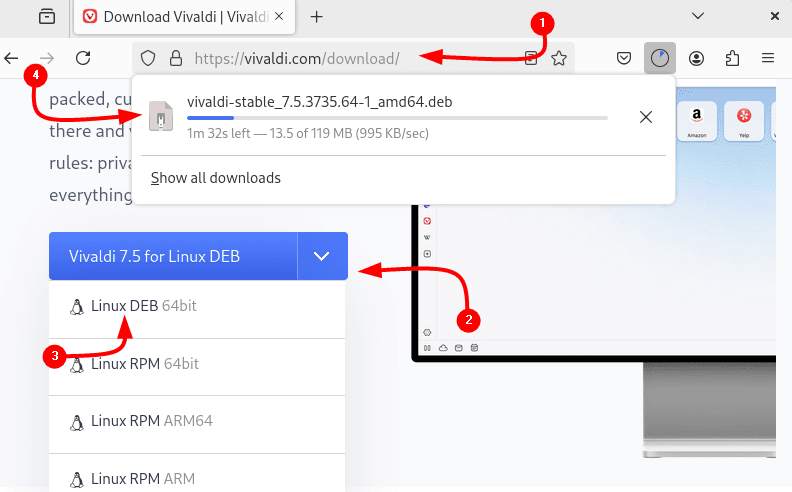
Alternatively, the .deb file for the Vivaldi browser can be downloaded via terminal using its download link, as in the command below:
wget https://downloads.vivaldi.com/stable/vivaldi-stable_7.5.3735.64-1_amd64.deb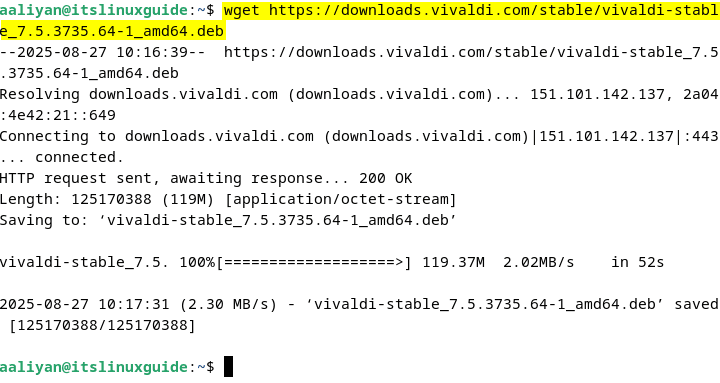
Now use the Debian default package manager (apt) to install the Vivaldi browser via its .deb file:
sudo apt install ./vivaldi-stable_7.5.3735.64-1_amd64.deb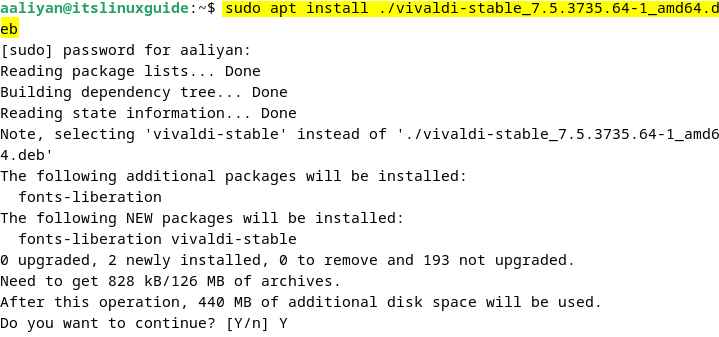
Next, execute the version command to verify the Vivaldi installation:
vivaldi-stable --version
To launch the Vivaldi browser via the command line/terminal, execute the command below:
vivaldi-stable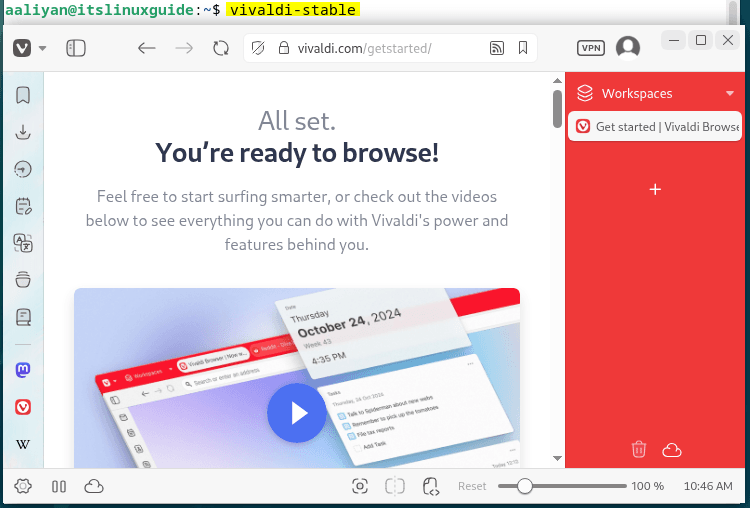
2: Through Debian Software Install App
Another way to install a .deb file on Debian-based Linux distributions is using the Software install application that comes pre-installed. So, download the .deb file first:
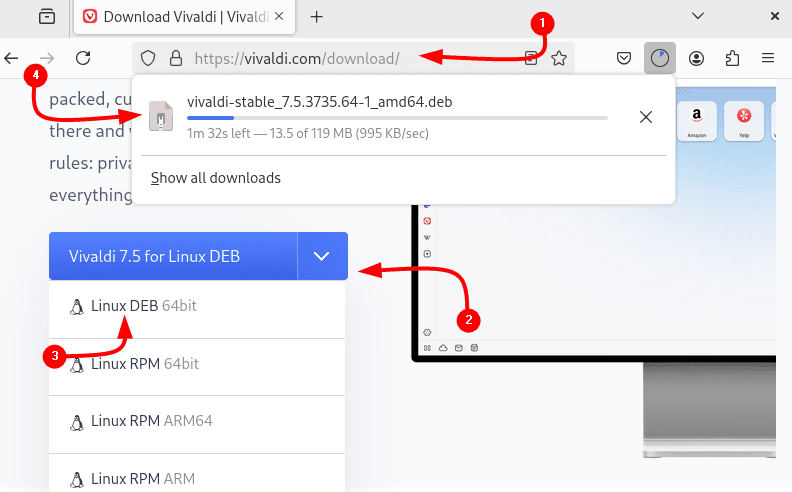
Next, open the downloaded .deb file location and from the right-click menu select the Open With option, which will open up a list of apps available:
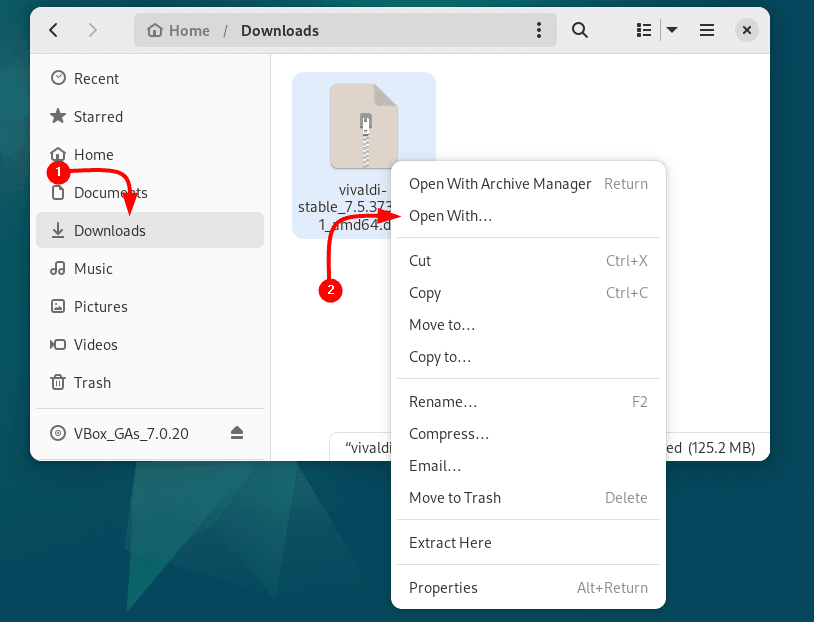
Next, select the Software Install app and then click on Open:
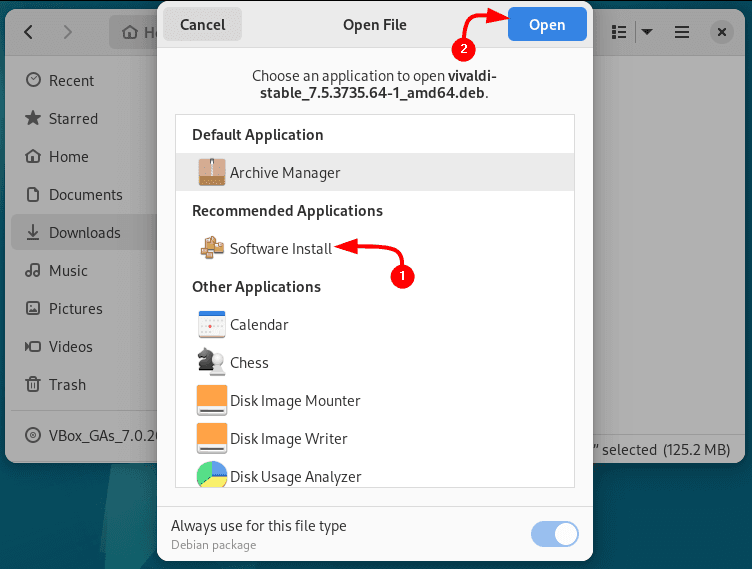
Now a new tab will open as in the image below, here click on Install to prompt Vivaldi installation via its .deb file:

Once the installation is complete, launch the Vivaldi browser by selecting Open as in the image below:

3: Through Vivaldi Official Repository
The apt package manager may not have a repository or installation file for every application, so for that, repositories can be added manually, and the same is the case with Vivaldi. To add the repository for the Vivaldi browser, execute the command below:
echo "deb http://repo.vivaldi.com/stable/deb/ stable main" | sudo tee /etc/apt/sources.list.d/vivaldi.list
For the validation/verification of the repository, add the GPG key by using the curl utility as in the command below:
curl -fsSL https://repo.vivaldi.com/stable/linux_signing_key.pub | sudo gpg --dearmor -o /etc/apt/trusted.gpg.d/vivaldi.gpg
Now update the repository information of apt so that the added repository is synchronized with the local package database:
sudo apt update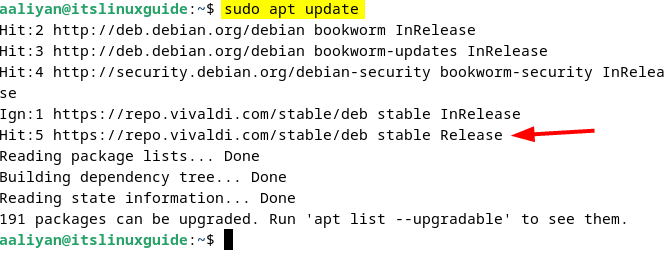
Lastly, use the command below to install Vivaldi by adding the repository:
sudo apt install vivaldi-stable -y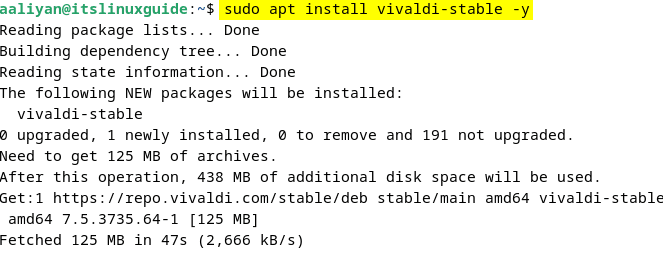
To see all the apps installed on a Debian-based Linux distribution, use the command below. This helps not only in verifying the installations but will also help in checking the versions:
sudo apt list --installed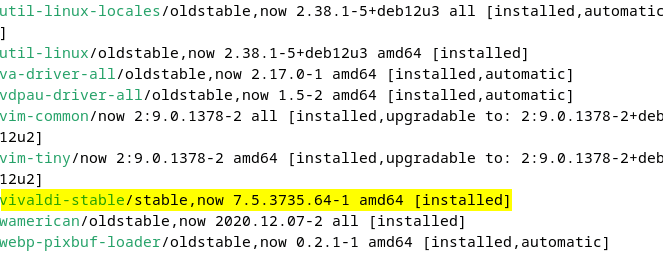
4: Through Flathub Repository
Flathub is a community-driven software repository that provides Flatpak packages, resulting in easy installation of applications like Vivaldi on Debian systems. To install Vivaldi on Debian via Flatpak, use the following command:
flatpak install flathub com.vivaldi.Vivaldi

To launch the Vivaldi browser on Debian through the Flatpak package manager, execute:
flatpak run com.vivaldi.Vivaldi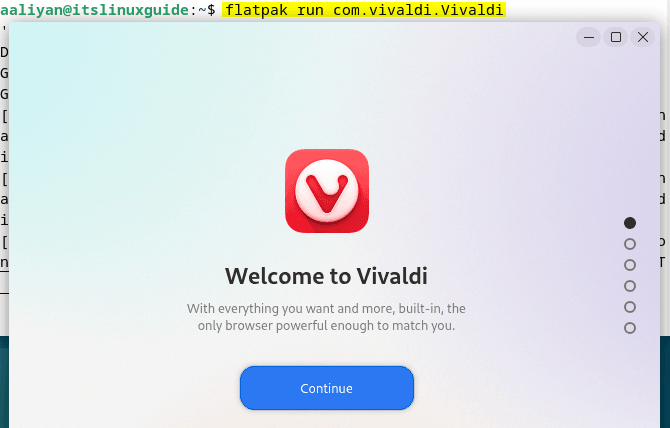
5: Through Snap Package Installer
Snap is a universal software packaging system managed by Canonical that enables installing applications like Vivaldi on Debian with bundled dependencies and automatic updates:
sudo snap install vivaldi
To verify the installation of this browser, list down the apps installed via snap that will also display the version, along with the publisher:
sudo snap list
Conclusion
For Debian users, Vivaldi integrates seamlessly with Linux, offering both .deb packages and universal packaging options. This guide discussed 5 ways to install Vivaldi, which include: using the Vivaldi .deb file, the Debian software install app, Vivaldi repository, and third-party package installers like Snap and Flatpak.
